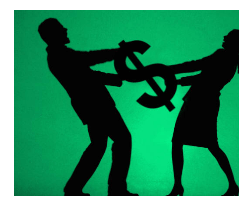 The retail industry loses billions of dollars a year due to shoplifting. And the small business owner that loses money due to shoplifting is a struggling business, without the resources the big retail chain has. Shoplifting, employee theft, organized crime, and even merchant theft, are major reasons why some small businesses close their doors for good. Shoplifters with a drug addiction problem are also a big problem for these businesses, because they enter their store to steal big quantities of merchandise to sell for cash to keep with their addiction drugs.
The retail industry loses billions of dollars a year due to shoplifting. And the small business owner that loses money due to shoplifting is a struggling business, without the resources the big retail chain has. Shoplifting, employee theft, organized crime, and even merchant theft, are major reasons why some small businesses close their doors for good. Shoplifters with a drug addiction problem are also a big problem for these businesses, because they enter their store to steal big quantities of merchandise to sell for cash to keep with their addiction drugs.
Prosecuting the shoplifter is always a hard decision for the small business owner to make, specially when they consider the financial burden attorneys’ fees will have in their business. A small quantity of small business owners choose to prosecute, but many choose to terminate the employee and deal with the loss instead.
For more about this and other topics about shoplifting, follow the links below.
It’s better to prevent addiction than cure
Addiction is powerful and destructive.
And there is no magic bullet, no magic cure.
Ask any alcoholic or drug addict in recovery and he or she will confirm that it takes perseverance and self-discipline to remain clean and sober, one day at a time, for the rest of his or her life.
What does this have to do with the American court system?
Empirically, addiction and crime go hand-in-hand. And people charged with crimes end up in court.
As a judge to whom thousands of criminal cases have been assigned, I have detected patterns when it comes to substance abuse.
A horrific crime with unspeakable allegations? Methamphetamine addiction.
Property crimes, including burglary, shoplifting and auto theft? Heroin addiction.
Domestic violence? Child abuse/neglect or animal abuse? Alcohol and methamphetamine.
DWI? Alcohol and/or drugs, both legal and illegal.
Of course, this is not an exhaustive list, just patterns I have noticed in my courtroom. Additionally, there is often an overlay of mental illness, sometimes specifically brought about by years of chronic substance abuse.
Shoplifter stole food for drugs
A PERSISTENT shoplifter who stole to fund his drugs habit was handed a suspended prison sentence and warned that if he committed another offence he was likely to be jailed immediately.
Christopher Page pleaded guilty to eight charges of theft from a shop – seven of them from the same One Stop shop in Pinehurst. The total value of the goods stolen was more than £200.
James Burnham, prosecuting, told Swindon Magistrates Court on Wednesday that Page went into the One Stop on August 5 and took six packs of steak without paying. He returned just before 5pm on August 7 and picked up washing liquids and gels worth £67.80, putting them down his trousers and walking out. The following day he was back to steal milkshakes valued at £3.
Then on August 9 he put more washing liquids, five packs of bacon, sausages, shower gels and a packet of hot chocolate worth £35.45 down his trousers and left without paying.
On August 14 he took washing liquids and the following day he stole fabric conditioner and washing capsules to the value of £13.65. “He sold the items to buy food and drugs if they were not food or were high value,” explained Mr Burnham. Ten days later he was back at the One Stop but this time he was seen hiding three boxes of Ferrero Rocher worth £19.50.
Good start in tackling gun violence-drug addiction problems
I attended two meetings recently that provided me with valuable information about problems in our community.
The Heroin Awareness meeting presented by the City of Myrtle Beach was excellent. I hadn’t realized the extent of the problem. My heart aches for those addicted and their families. Many try heroin because of peer pressure and become addicted. Others had been taking prescription meds for pain, became addicted, and then turned to heroin. Some overdose the first time they try it. Some go through many painful withdrawals before they are finally able to stay clean. Drug addicts are responsible for many crimes of shoplifting, burglary and prostitution in order to feed their habits.
I hope this Heroin Awareness program will be offered again to a countywide audience and especially students. Was the whole program filmed? If so, could it be shown in schools and community groups?
I also attended an Horry County Democratic Party Committee meeting on gun sense. We are seeking information so that we can understand how gun violence can be reduced. Horry County officers Wyatt and Conti were generous with their time and knowledge.



 ” is well aware of how she is obtaining the merchandise and are even encouraging the actions. These are the types of people that hurt big box retailers and that can put small shops out of business. These are the shoplifters we need to focus on and the ones that the criminal justice system need to come down hard on. The only thing that will stop Jane from stealing is being behind bars. This is her full time job.
” is well aware of how she is obtaining the merchandise and are even encouraging the actions. These are the types of people that hurt big box retailers and that can put small shops out of business. These are the shoplifters we need to focus on and the ones that the criminal justice system need to come down hard on. The only thing that will stop Jane from stealing is being behind bars. This is her full time job.  The amount of calls reported by Walmart stores to the local police are staggering.
The amount of calls reported by Walmart stores to the local police are staggering.

 Yep, you probably are! The shoplifter that walked out the door with your $45 item cost you MORE actual money than $45!
Yep, you probably are! The shoplifter that walked out the door with your $45 item cost you MORE actual money than $45! You have (or I hope you have) read the last article on preventing check fraud. It’s a great way to protect your business from a different avenue of fraud. Another, much more popular and prevalent scheme is credit card fraud. The United States lags far behind the other major countries in the fight against credit card fraud. We’ve only just begun adopting chip and pin technology and it will be several more years before we see magnetic strips become a relic of the past. So exactly how can you identify and prevent a fraudulent change from happening in your store and how exactly do you lose money on these transactions?
You have (or I hope you have) read the last article on preventing check fraud. It’s a great way to protect your business from a different avenue of fraud. Another, much more popular and prevalent scheme is credit card fraud. The United States lags far behind the other major countries in the fight against credit card fraud. We’ve only just begun adopting chip and pin technology and it will be several more years before we see magnetic strips become a relic of the past. So exactly how can you identify and prevent a fraudulent change from happening in your store and how exactly do you lose money on these transactions? You know, we talk about the thousands of ways you, the small business owner, loses money to thieves constantly. Most of that is centered on shoplifters and boosters stealing your merchandise. We talk about that for good reason… it’s one of the biggest financial impacts to your business if left unchecked. However, there are so many other ways that your business can be targeted by criminals and some of them may appear so legitimate, that you would have no idea you were a victim for weeks. In that time, the criminal is long gone and you’re left paying for that theft out of your pocket. One area of training that is often overlooked in retail is check fraud. I’ll give you some advice on how to identify this in your store and protect yourself from vulnerability.
You know, we talk about the thousands of ways you, the small business owner, loses money to thieves constantly. Most of that is centered on shoplifters and boosters stealing your merchandise. We talk about that for good reason… it’s one of the biggest financial impacts to your business if left unchecked. However, there are so many other ways that your business can be targeted by criminals and some of them may appear so legitimate, that you would have no idea you were a victim for weeks. In that time, the criminal is long gone and you’re left paying for that theft out of your pocket. One area of training that is often overlooked in retail is check fraud. I’ll give you some advice on how to identify this in your store and protect yourself from vulnerability.